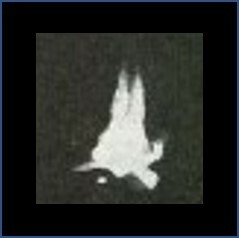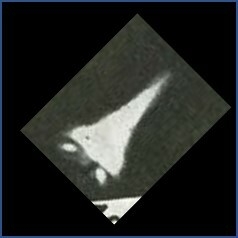Furcatolithus predistentus
Set number: 841
-
1
-
2
-
3
-
4
10µm
Sphenolithus predistentus Bramlette & Wilcoxon, 1967
Sphenolithus tribulosus Roth, 1970
Furcatolith has a shallow hollow conical frustum shape proximal cycle and a long apical spine broadening at the proximal end. The cone shape duolithic apical cycle has a flat base. The height of the apical spine varies greatly and may have various length bifurcation distally.
In cross-polarised light, the apical spine with axial c-axis displays maximum birefringence at 45° but extinct (dim) at 0° [the axial suture between the two helves is better seen at this orientation].
The shallow, empty frustum shape proximal cycle has a much narrower diameter than the diameter of the apical spine at its base.
Furcatolithus predistentus differs from all other species of Furcatolithus Martini, 1965 by a distinct broadening of the apical spine at its base. It is further distinguished from all other Furcatolithus species by having a proximal cycle with a much narrower diameter than the diameter of the apical spine at its base.
Bramlette, M. N. & Wilcoxon, J. A. 1967. Middle Tertiary calcareous nannoplankton of the Cipero section, Trinidad, W.I. Tulane Studies in Geology and Paleontology 5: 93-131.
Howe, R., 2021. Ultrastructure and taxonomy of the family Sphenolithaceae. Journal of Nannoplankton Research 39(1), 29-75.
Martini, E. 1965. Mid-Tertiary calcareous nannoplankton from Pacific deep-sea cores. Colston Papers 17: 393-411.
Roth, P. H. 1970. Oligocene calcareous nannoplankton biostratigraphy. Eclogae Geologicae Helvetiae 63: 799-881.

